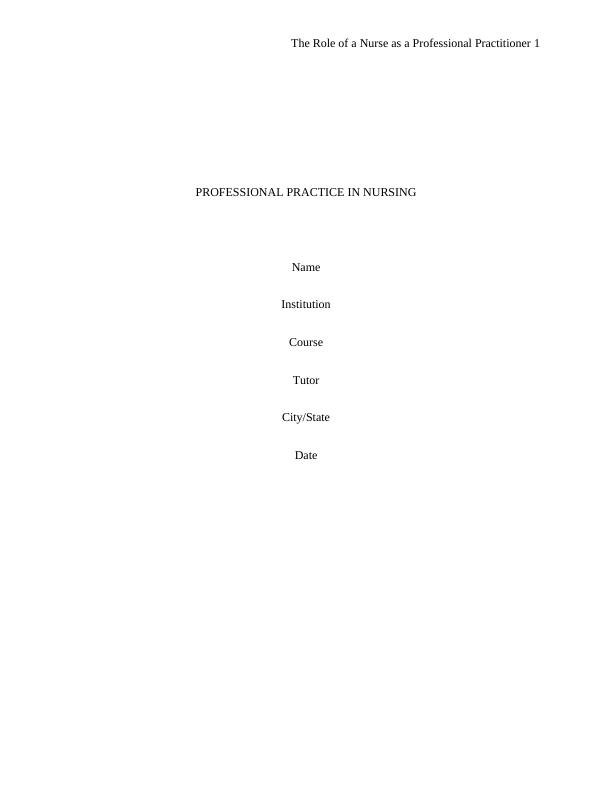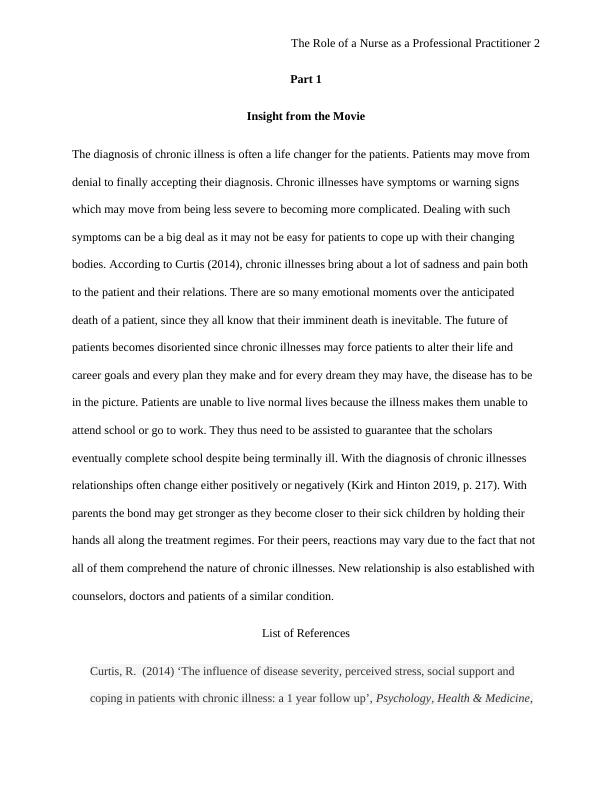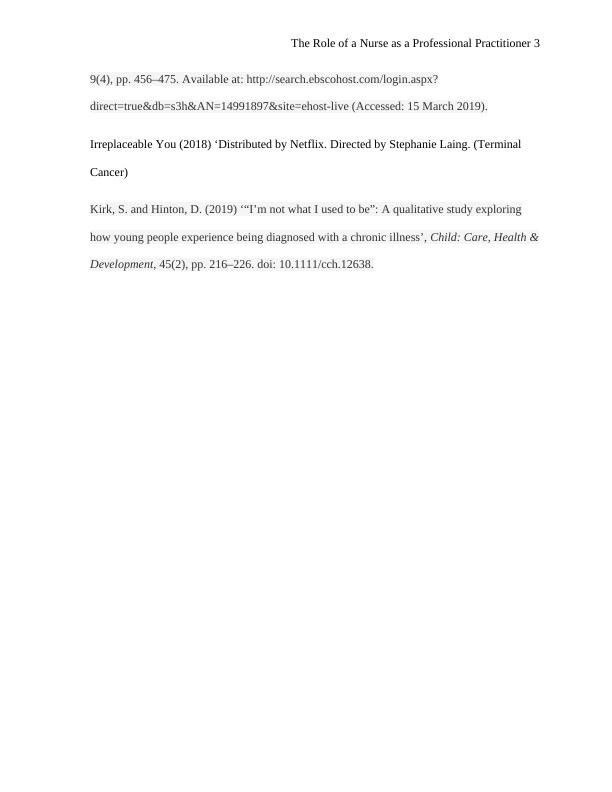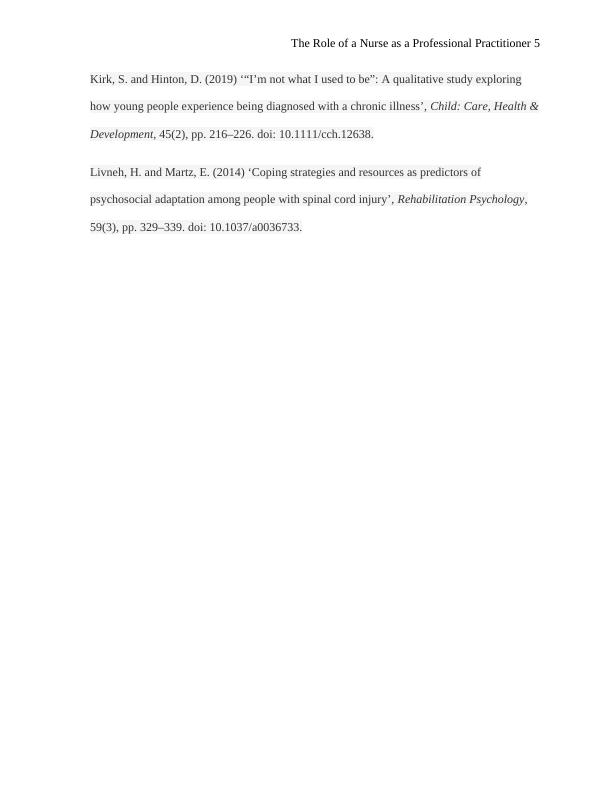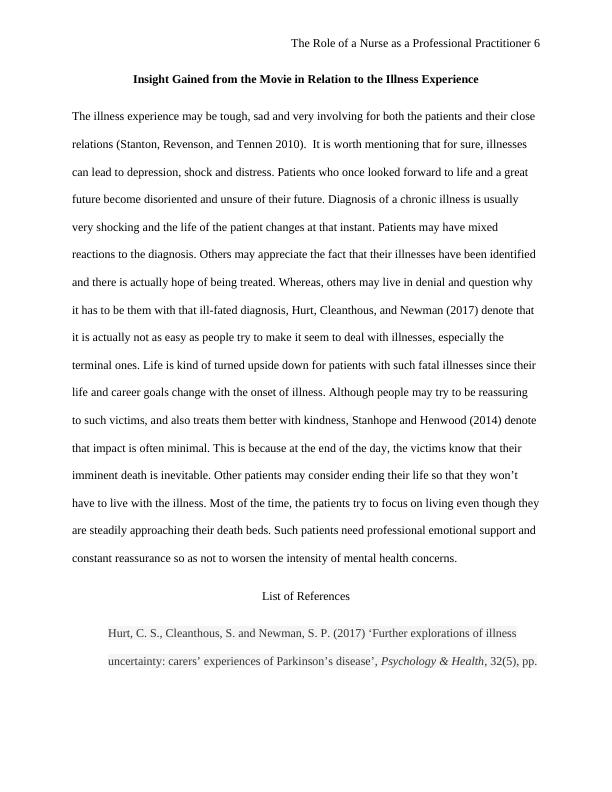The Role of a Nurse as a Professional Practitioner
This Unit Outline provides information about the course CNA782 - THE ILLNESS EXPERIENCE offered by the School of Nursing, College of Health and Medicine at The University of Tasmania. It includes details about the unit description, intended learning outcomes, assessment schedule, and resources.
23 Pages6376 Words203 Views
Added on 2023-04-25
About This Document
This article discusses the role of a nurse as a professional practitioner in nursing. It explores the insights gained from the movie, themes from readings, and what can be done differently. The article also covers the illness experience, hospitalization, sense of embodiment crisis, interrelation between the body illness, emotional changes brought about by chronic illnesses, and self-identity in illness.
The Role of a Nurse as a Professional Practitioner
This Unit Outline provides information about the course CNA782 - THE ILLNESS EXPERIENCE offered by the School of Nursing, College of Health and Medicine at The University of Tasmania. It includes details about the unit description, intended learning outcomes, assessment schedule, and resources.
Added on 2023-04-25
ShareRelated Documents
End of preview
Want to access all the pages? Upload your documents or become a member.
Palliative Care in the UK for Persons with Terminal Conditions
|19
|7893
|85
Nursing - Severe Life-Threatening Disease
|5
|1112
|16
Mental Health in Nursing Answer 2022
|7
|2063
|8

